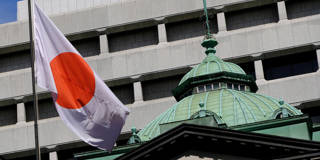The Bank of Japan's unexpected decision to raise its ceiling on government-bond yields could be the first step toward a long-awaited monetary-policy normalization, despite official statements to the contrary. After all, there is good reason to think that inflation will remain slightly above target in 2023.
TOKYO – On December 20, the Bank of Japan decided to raise its ceiling on ten-year government bond yields from 0.25% to 0.5%. Within minutes of the announcement, the yen appreciated against the US dollar by 3%, the Nikkei 225 fell by 2.5%, and the ten-year bond rate jumped almost 25 basis points to approach the new ceiling.
This sharp reaction owed much to the fact that the decision took investors by surprise. The BOJ has long been intervening in the bond market to keep yields anchored close to the zero-bound, and the market was expecting it to maintain its current “yield curve control” (YCC) policy until the end of Governor Haruhiko Kuroda’s ten-year tenure in early April 2023. But, according to Kuroda, allowing more flexibility in the ten-year bond market has become necessary to reinforce the YCC’s effectiveness.
The BOJ had been purchasing increasingly large sums of ten-year bonds at the 0.25% level, often adding them to its balance sheet a day after the Ministry of Finance issued them. Now, one can infer that the BOJ was alarmed to find itself purchasing bonds at an accelerating rate. After all, the yield curve recently dipped at the ten-year mark, meaning the ten-year bond rate was lower than both the nine-year and 15-year rates.

TOKYO – On December 20, the Bank of Japan decided to raise its ceiling on ten-year government bond yields from 0.25% to 0.5%. Within minutes of the announcement, the yen appreciated against the US dollar by 3%, the Nikkei 225 fell by 2.5%, and the ten-year bond rate jumped almost 25 basis points to approach the new ceiling.
This sharp reaction owed much to the fact that the decision took investors by surprise. The BOJ has long been intervening in the bond market to keep yields anchored close to the zero-bound, and the market was expecting it to maintain its current “yield curve control” (YCC) policy until the end of Governor Haruhiko Kuroda’s ten-year tenure in early April 2023. But, according to Kuroda, allowing more flexibility in the ten-year bond market has become necessary to reinforce the YCC’s effectiveness.
The BOJ had been purchasing increasingly large sums of ten-year bonds at the 0.25% level, often adding them to its balance sheet a day after the Ministry of Finance issued them. Now, one can infer that the BOJ was alarmed to find itself purchasing bonds at an accelerating rate. After all, the yield curve recently dipped at the ten-year mark, meaning the ten-year bond rate was lower than both the nine-year and 15-year rates.